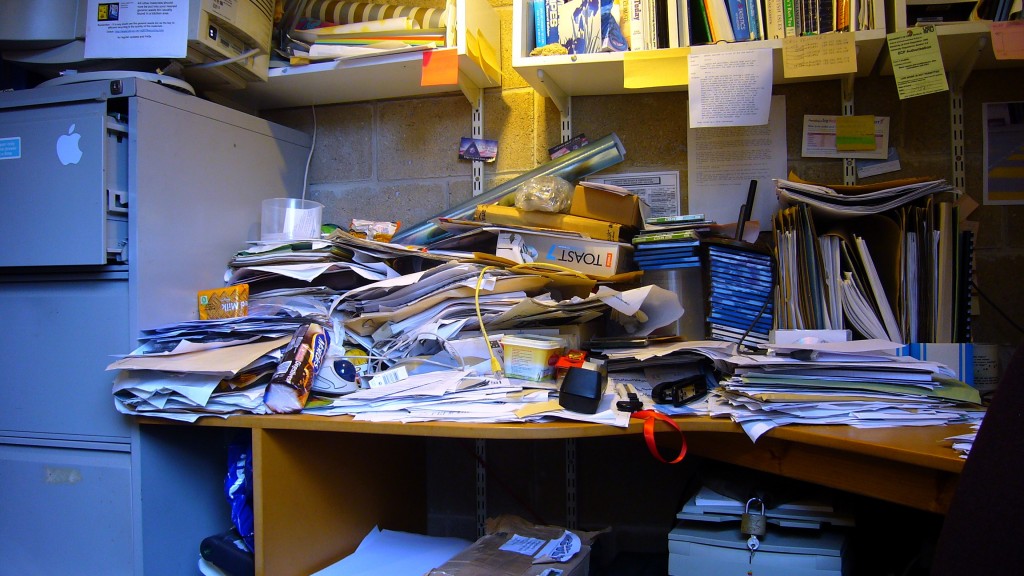 Have you ever thought about improving your personal work environment?
Have you ever thought about improving your personal work environment?
Your web browser has eight windows open. Each window sports at least half a dozen tabs. Your monitor is festooned with Post-it® notes. Hundreds of handwritten reminders, business cards, file folders, magazines with slips of paper peaking out, and unread articles litter your office desk.
Are you, perhaps, feeling a little overwhelmed by your personal work environment? If so, and this is a habitual state rather than an occasional, acceptable occurrence, read on!
Here is what I have found to be the most powerful tool that will help to restore your sanity when workspace chaos has expanded beyond your comfort zone. (You do have a comfort zone, I hope?)
Losing control
Let’s start with a key question. Why is your personal working environment habitually and unacceptably out of control?
Answer: Because it’s reflecting a way of working that isn’t working for you.
So making changes in your physical environment, by buying twenty plastic filing trays, dumping sixteen piles of paper into file cabinets, switching to an iPad, or even setting fire to your office is not going to solve your long-term problem.
What you need to do is change the way you work. And change, as we all know, is hard.
Luckily, a lot of smart people have spent a lot of time thinking (and written a lot of books) about how to make changes in how you work. Since 1983, I’ve worked for myself, read many of these books, and tried their techniques, usually with limited success.
Getting Things Done
I read David Allen’s Getting Things Done (known as GTD by devotees) in 2005. It’s still Amazon’s best-selling book in the categories of Time Management, Health & Stress, and Self-Esteem. This doesn’t surprise me, as the book is brilliant. Unlike other productivity methodologies, it doesn’t prescribe a complete system for organizing your life. Instead, David explains clearly:
- The essential workflow processes you need to follow to clear and organize your work-life; and
- What you need to understand to choose tools and procedures that work for you.
Implementing GTD does not involve throwing out or changing all the ways you work now. Rather, Allen’s approach gives you both a powerful lens to see what is functional in your work-life, and a comprehensive framework for making improvements.
Creating GTD that works for you
Each person’s implementation of GTD is unique. One person may use file trays and 3 x 5 cards to capture “stuff”, and another, GTD software running on a personal computer or mobile device. If email messages are piling up in your inbox, there are GTD approaches to keeping your head above water. Ultimately, you’re responsible for doing the work you need to do. GTD just provides a practical way to create the system that works best for you.
I’m not going to delve more into GTD here. There are plenty of resources on the web, including David Allen’s website and this introductory article from 43folders. But I suggest that to start you simply buy the book. It may turn out to be the best way of improving your personal work environment.
Am I 100% successful at implementing GTD in my work life? No. Sometimes I find it difficult to maintain the necessary discipline. I also have some reservations about David Allen’s approach to reviews. But I have integrated GTD’s key features into how I work, and have obtained a significant increase in productivity. More importantly, I understand why my work environment can deteriorate and what to do if it does. Possessing this understanding is empowering for me.
I hope it is for you, too.
Do you use Getting Things Done? What’s been your experience? Or do you prefer another methodology to organize your personal work environment?
Image attribution: Flickr user harryharris
